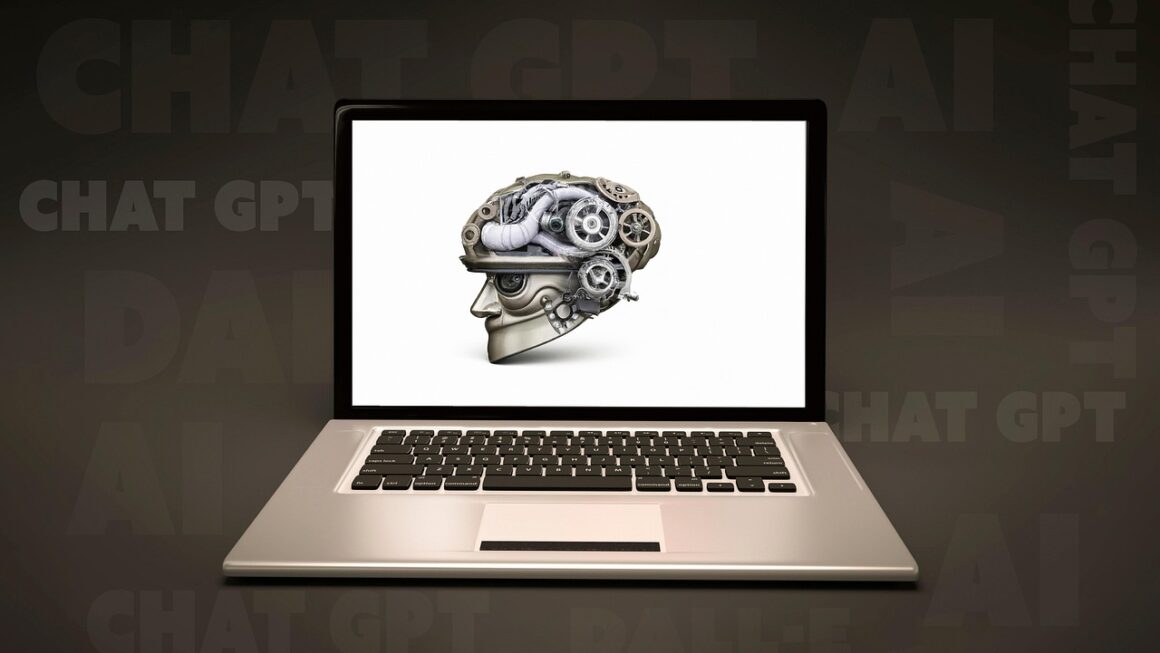The future is no longer a distant concept; it’s rapidly unfolding before our eyes, largely thanks to the advancements in Artificial Intelligence (AI). From self-driving cars to personalized medicine, AI is already transforming industries and reshaping our daily lives. Understanding the potential trajectory of AI is crucial for businesses, individuals, and policymakers alike to prepare for the opportunities and challenges that lie ahead. This blog post will delve into the AI future, exploring key trends, applications, and the ethical considerations that will shape its development.
The Expanding Landscape of AI Applications
AI is no longer confined to research labs; it’s permeating virtually every sector of the economy, creating innovative solutions and disrupting traditional business models.
AI in Healthcare: Revolutionizing Patient Care
AI is revolutionizing healthcare through various applications, from diagnostics to drug discovery.
- Diagnosis and Treatment: AI algorithms can analyze medical images (X-rays, MRIs) with greater speed and accuracy than human doctors, leading to earlier and more accurate diagnoses. For example, AI-powered tools can detect cancerous tumors at early stages, improving patient outcomes.
- Personalized Medicine: AI can analyze vast amounts of patient data (genetics, lifestyle, medical history) to create personalized treatment plans. This tailored approach ensures that patients receive the most effective therapies for their specific needs.
- Drug Discovery: AI accelerates the drug discovery process by identifying potential drug candidates and predicting their efficacy. This significantly reduces the time and cost associated with bringing new drugs to market.
- Remote Patient Monitoring: AI-powered wearables and remote monitoring systems enable continuous tracking of patients’ vital signs, allowing healthcare providers to intervene proactively and prevent complications.
AI in Finance: Enhancing Efficiency and Security
The financial industry is leveraging AI to improve efficiency, detect fraud, and personalize customer experiences.
- Fraud Detection: AI algorithms can analyze financial transactions in real-time to identify suspicious activity and prevent fraud. Machine learning models are trained on historical data to recognize patterns associated with fraudulent behavior, enabling faster and more accurate detection.
- Algorithmic Trading: AI-powered trading algorithms can execute trades automatically based on pre-defined rules and market conditions. This can lead to faster execution speeds and potentially higher profits.
- Customer Service: AI chatbots are providing 24/7 customer support, answering questions, and resolving issues quickly and efficiently. This improves customer satisfaction and reduces the workload on human agents.
- Risk Management: AI can assess and manage risk more effectively by analyzing vast amounts of data and identifying potential threats. This helps financial institutions make informed decisions and mitigate potential losses.
AI in Manufacturing: Optimizing Processes and Productivity
AI is transforming manufacturing by automating tasks, optimizing processes, and improving quality control.
- Predictive Maintenance: AI can analyze sensor data from machinery to predict when maintenance is needed, preventing breakdowns and minimizing downtime. This reduces maintenance costs and improves operational efficiency.
- Robotics and Automation: AI-powered robots can perform repetitive and dangerous tasks, freeing up human workers to focus on more complex and creative activities. This increases productivity and improves worker safety.
- Quality Control: AI can analyze images and sensor data to detect defects in products, ensuring high quality and reducing waste. This improves product consistency and reduces the risk of recalls.
- Supply Chain Optimization: AI can optimize supply chain operations by predicting demand, managing inventory, and optimizing logistics. This reduces costs and improves delivery times.
Key Trends Shaping the AI Future
Several key trends are driving the development and adoption of AI.
Explainable AI (XAI)
As AI systems become more complex, it’s crucial to understand how they make decisions. Explainable AI (XAI) focuses on developing AI models that can provide clear and understandable explanations for their predictions.
- Transparency: XAI promotes transparency by making AI decision-making processes more transparent.
- Trust: Understanding how AI systems arrive at their conclusions builds trust among users.
- Accountability: XAI enables accountability by allowing users to trace the reasoning behind AI decisions.
- Improved Performance: XAI can help identify biases and weaknesses in AI models, leading to improved performance.
Generative AI
Generative AI models can create new content, such as text, images, music, and video.
- Content Creation: Generative AI can be used to generate high-quality content quickly and efficiently. Examples include creating marketing copy, designing product prototypes, and composing music.
- Personalization: Generative AI can personalize content to individual users, improving engagement and satisfaction. For example, personalized news articles, product recommendations, and advertising.
- Innovation: Generative AI can be used to generate novel ideas and solutions, accelerating innovation.
Edge AI
Edge AI brings AI processing closer to the data source, reducing latency and improving privacy.
- Reduced Latency: Processing data at the edge reduces the need to send data to the cloud, resulting in lower latency.
- Improved Privacy: Processing data locally enhances privacy by minimizing the amount of data transmitted over the network.
- Increased Reliability: Edge AI can operate even when there is no internet connection, increasing reliability.
- Cost Savings: Processing data at the edge can reduce bandwidth costs and cloud computing expenses.
Ethical Considerations in AI Development
As AI becomes more powerful, it’s essential to address the ethical implications of its development and deployment.
Bias and Fairness
AI models can perpetuate and amplify biases present in the data they are trained on.
- Data Bias: Biased training data can lead to unfair or discriminatory outcomes.
- Algorithmic Bias: Biases can also be introduced through the design of AI algorithms.
- Mitigation Strategies: Strategies to mitigate bias include using diverse training data, auditing AI models for bias, and developing fairness-aware algorithms.
- Example: Facial recognition systems trained primarily on images of one race may perform poorly on individuals of other races.
Privacy and Security
AI systems often collect and process vast amounts of personal data, raising concerns about privacy and security.
- Data Security: Protecting data from unauthorized access and use is crucial.
- Data Privacy: Ensuring that personal data is used responsibly and ethically is essential.
- Regulations: Regulations such as GDPR and CCPA are designed to protect data privacy.
- Example: AI-powered surveillance systems raise concerns about privacy violations.
Job Displacement
The automation of tasks by AI can lead to job displacement in certain industries.
- Reskilling and Upskilling: Investing in reskilling and upskilling programs can help workers adapt to the changing job market.
- New Job Creation: AI can also create new jobs in areas such as AI development, maintenance, and ethics.
- Social Safety Nets: Strengthening social safety nets can provide support for workers who are displaced by AI.
- Example: The automation of manufacturing processes can lead to job losses for factory workers.
Preparing for the AI-Driven Future
Individuals, businesses, and policymakers must take proactive steps to prepare for the AI-driven future.
Education and Training
- Develop AI Literacy: Increase understanding of AI concepts and applications.
- Invest in AI Education: Support educational programs that teach AI skills.
- Promote Lifelong Learning: Encourage continuous learning and adaptation to new technologies.
- Example: Online courses, workshops, and bootcamps can help individuals develop AI skills.
Policy and Regulation
- Establish Ethical Guidelines: Develop ethical guidelines for AI development and deployment.
- Promote Transparency: Encourage transparency in AI decision-making processes.
- Address Bias and Discrimination: Implement policies to prevent bias and discrimination in AI systems.
- Protect Privacy: Enforce regulations to protect data privacy and security.
Business Strategy
- Identify AI Opportunities: Identify areas where AI can improve efficiency, reduce costs, and create new revenue streams.
- Invest in AI Infrastructure: Build the infrastructure needed to support AI development and deployment.
- Develop AI Talent: Recruit and train employees with AI skills.
- Collaborate with AI Experts: Partner with AI experts to leverage their knowledge and expertise.
Conclusion
The AI future promises unprecedented opportunities for innovation and progress across various sectors. However, it also presents significant challenges that must be addressed proactively. By understanding the key trends, applications, and ethical considerations surrounding AI, individuals, businesses, and policymakers can prepare for the future and harness the power of AI for the benefit of society. Embracing continuous learning, promoting ethical development, and fostering collaboration will be crucial to navigating the AI-driven world and realizing its full potential. The future is not something that happens to us; it’s something we create, and AI is a powerful tool in shaping that future.




